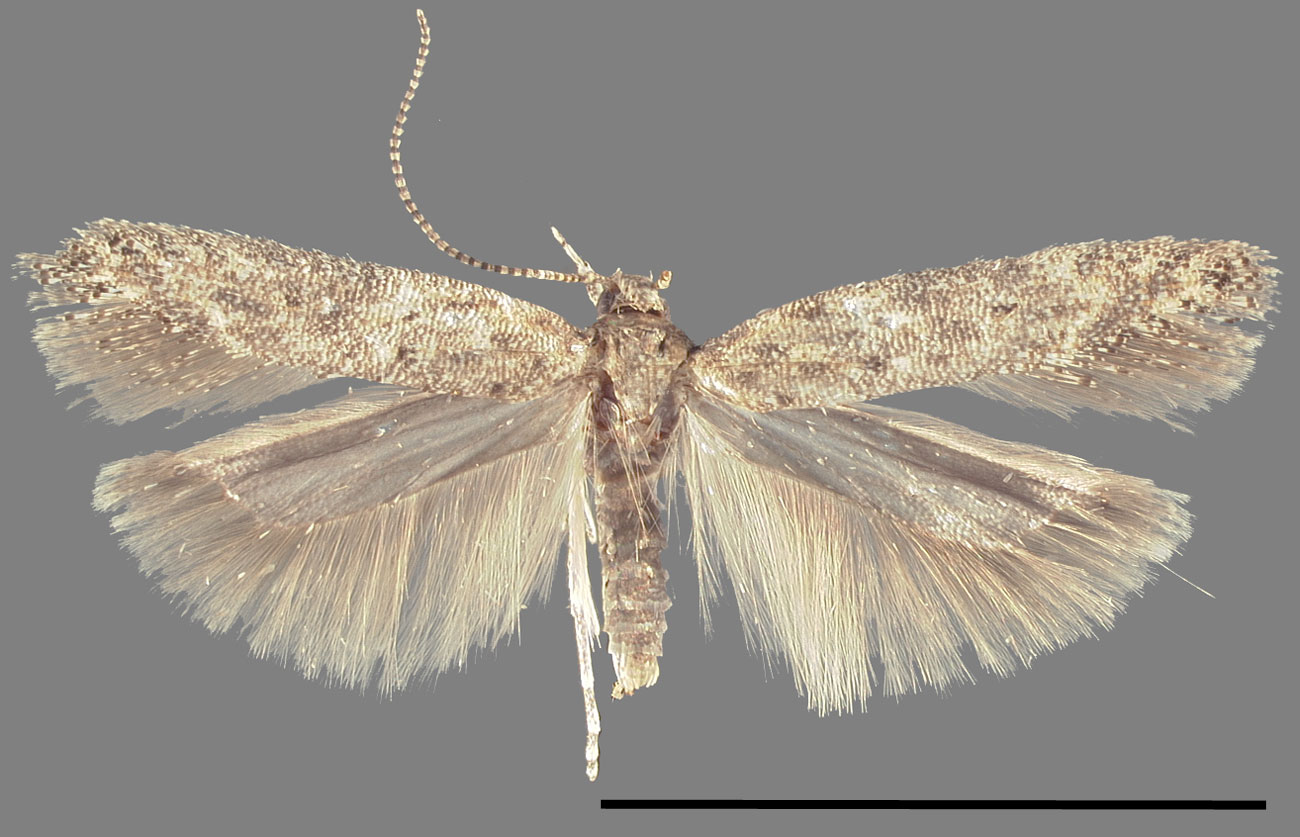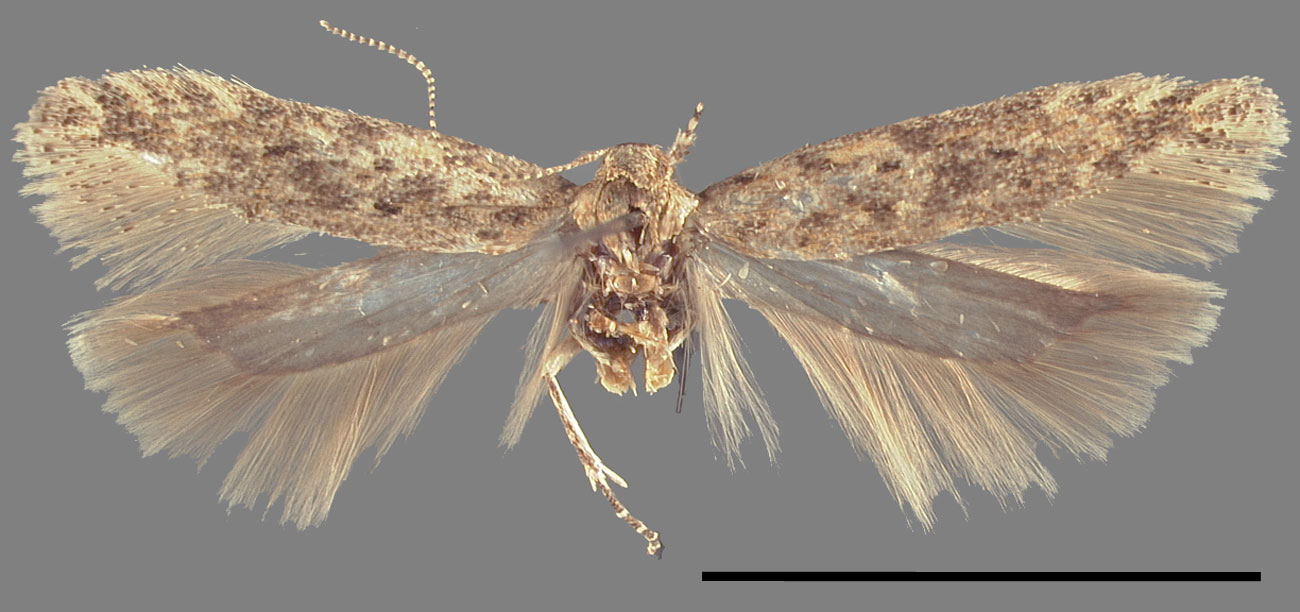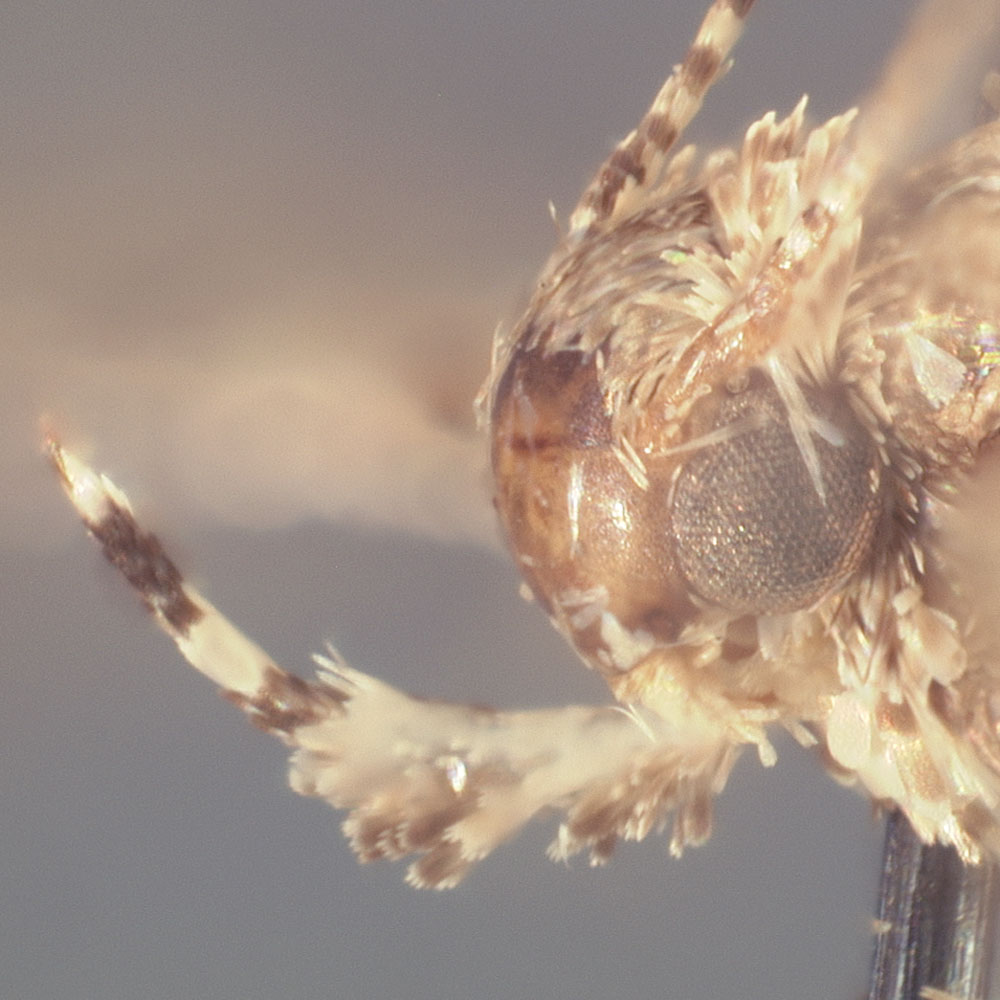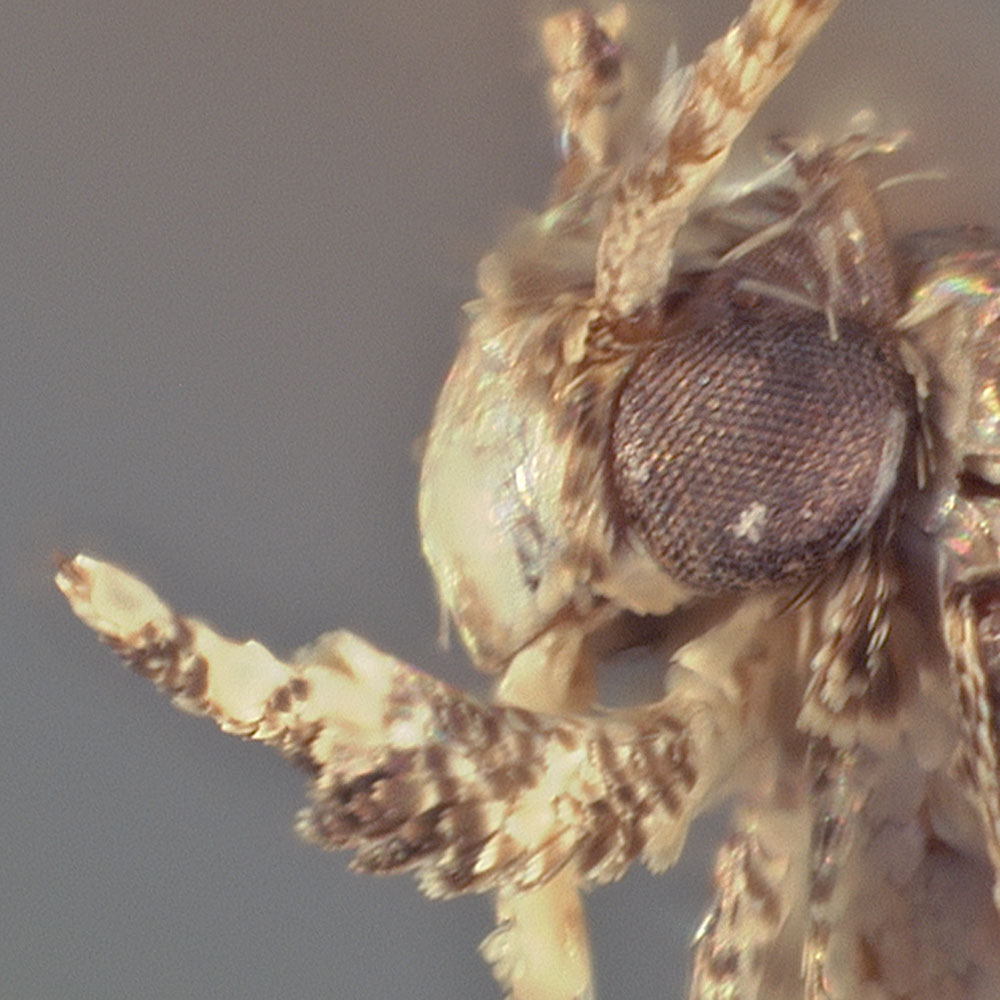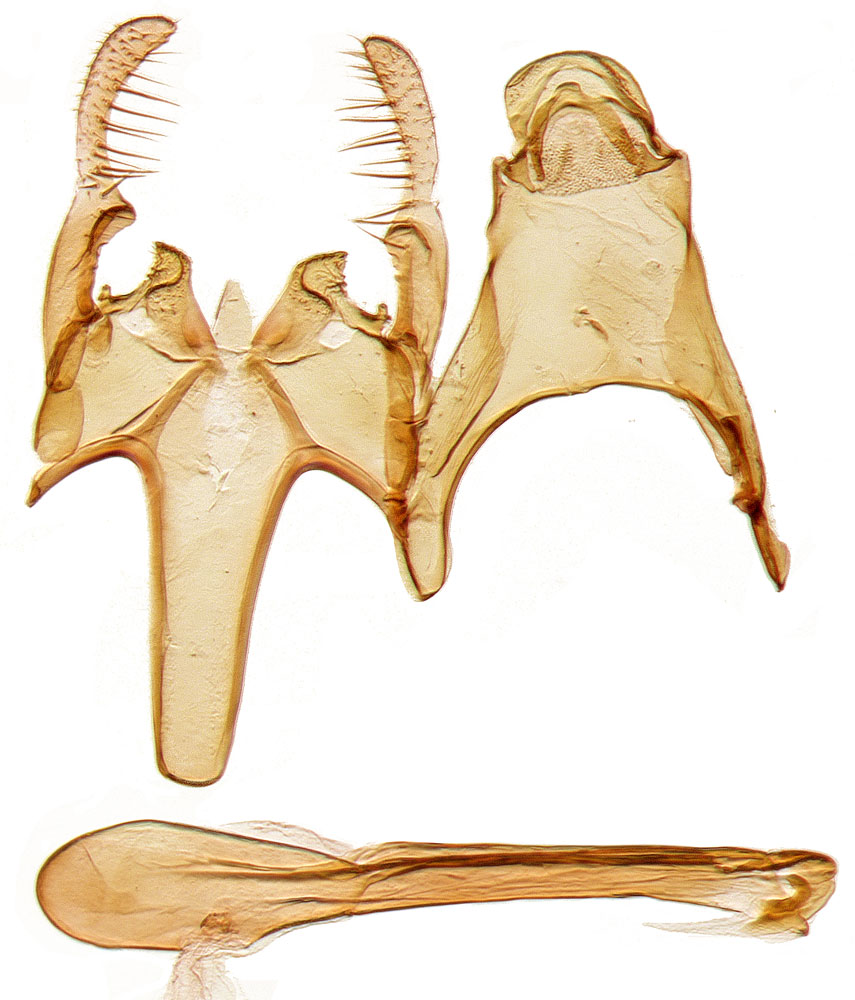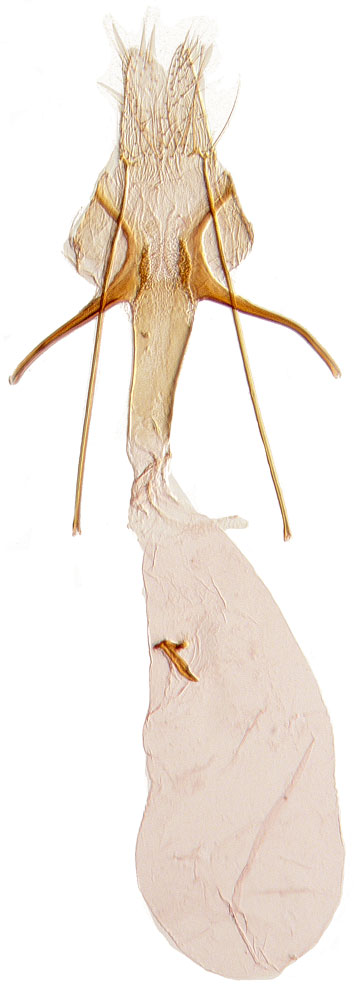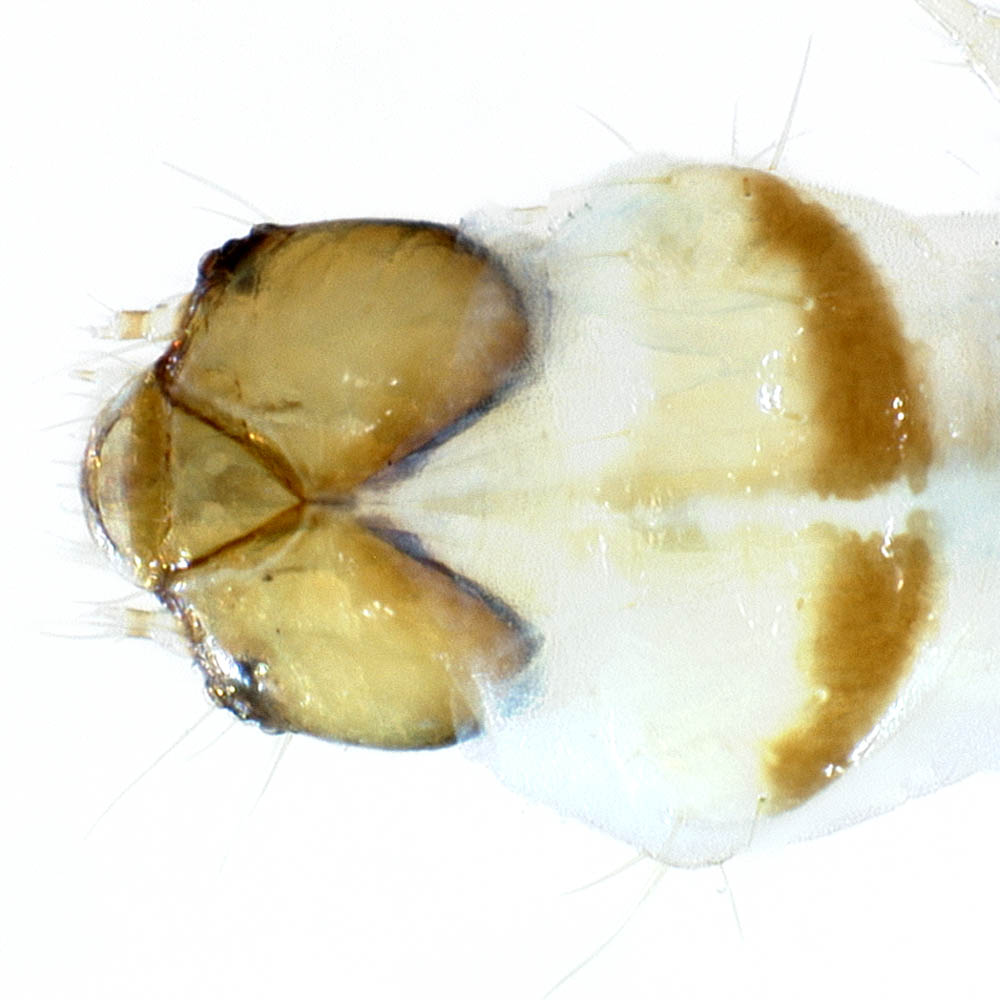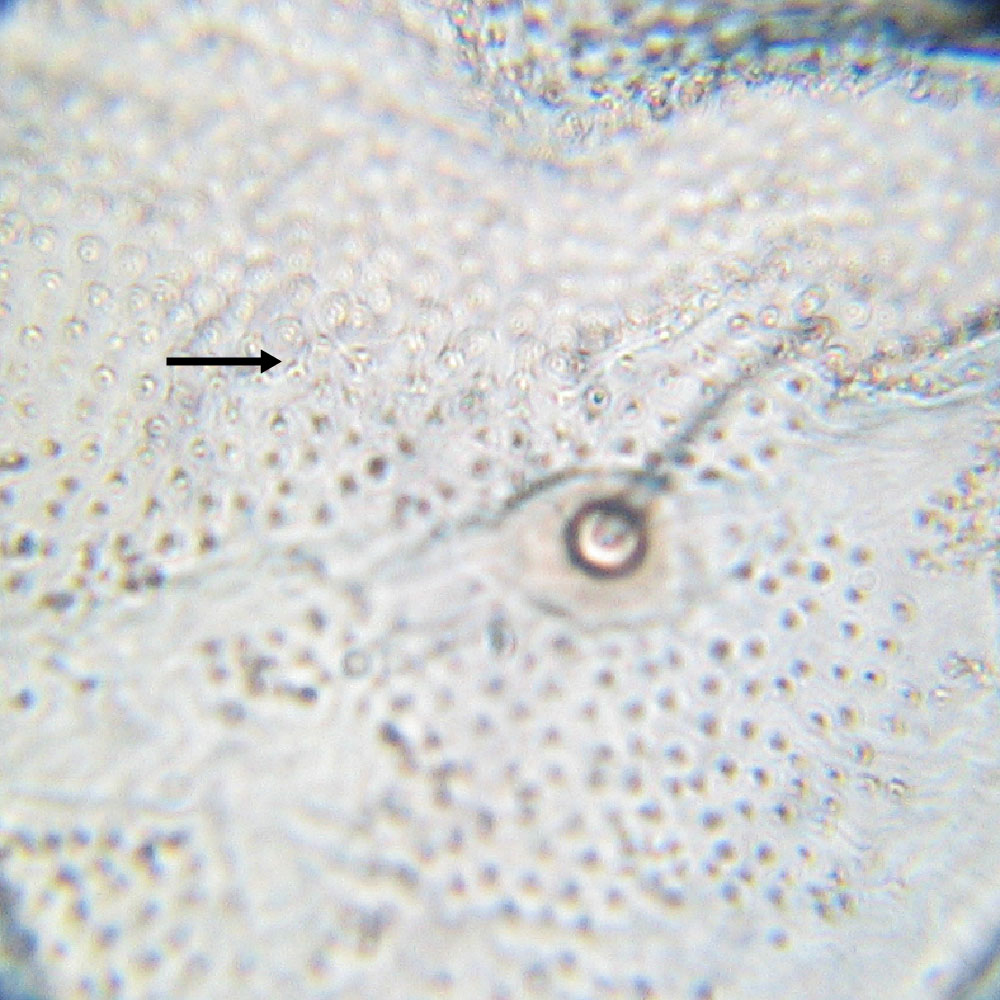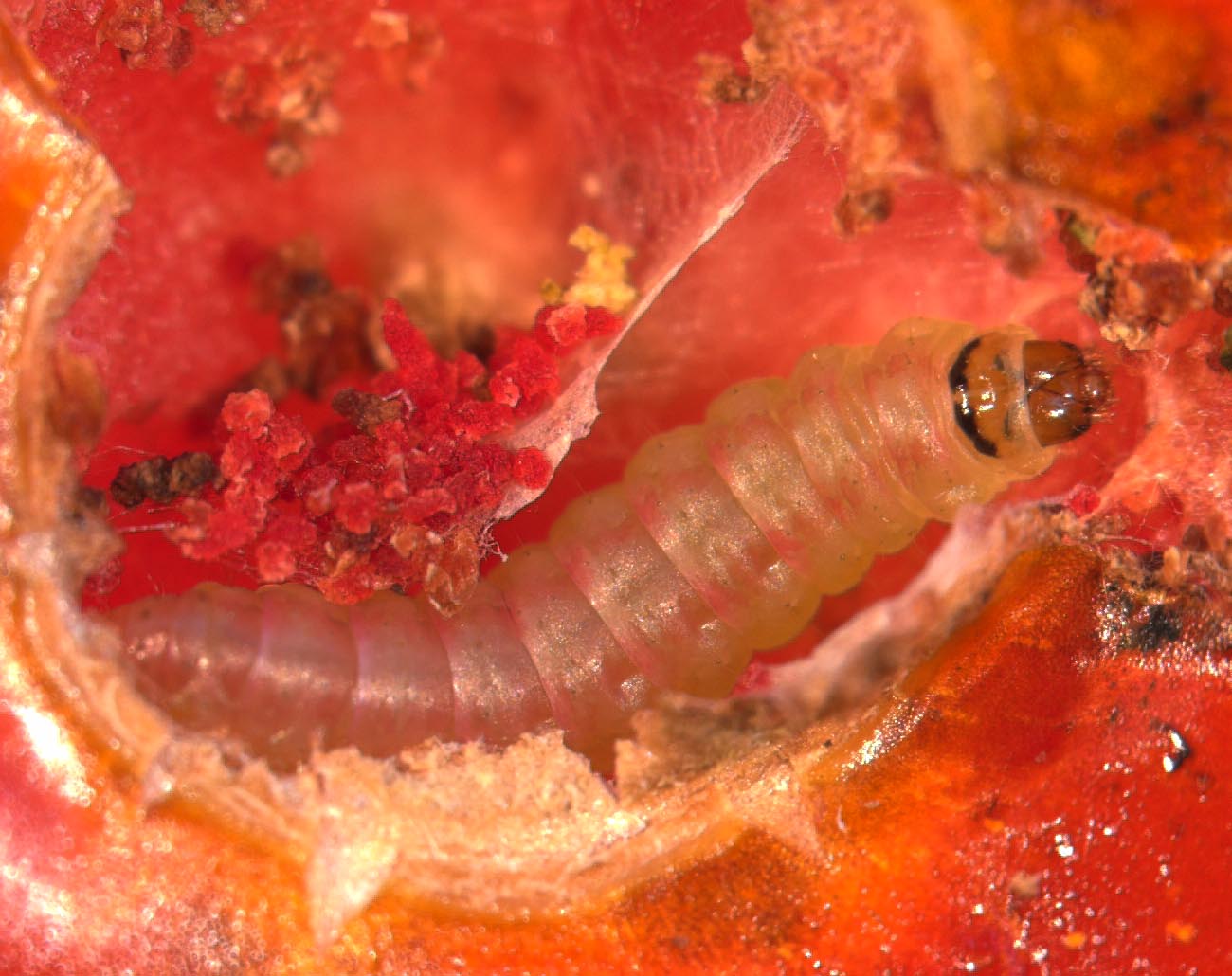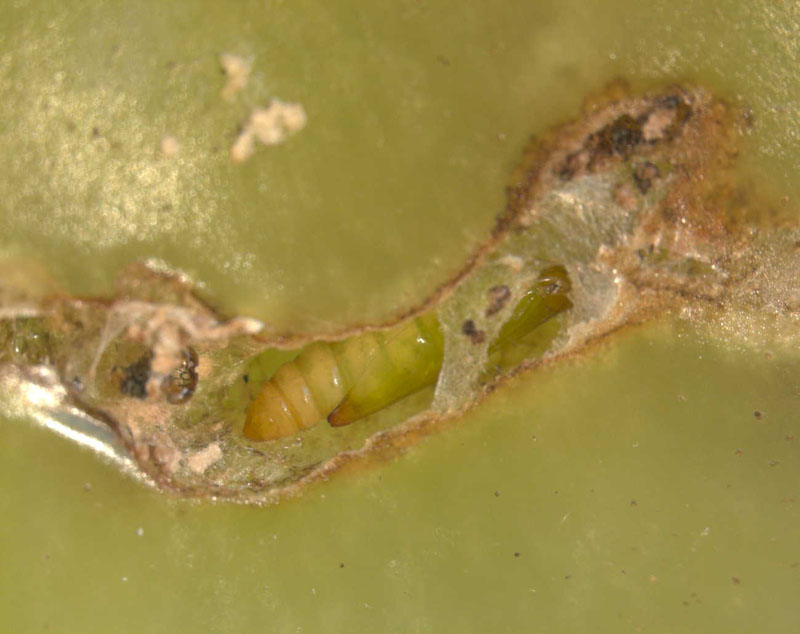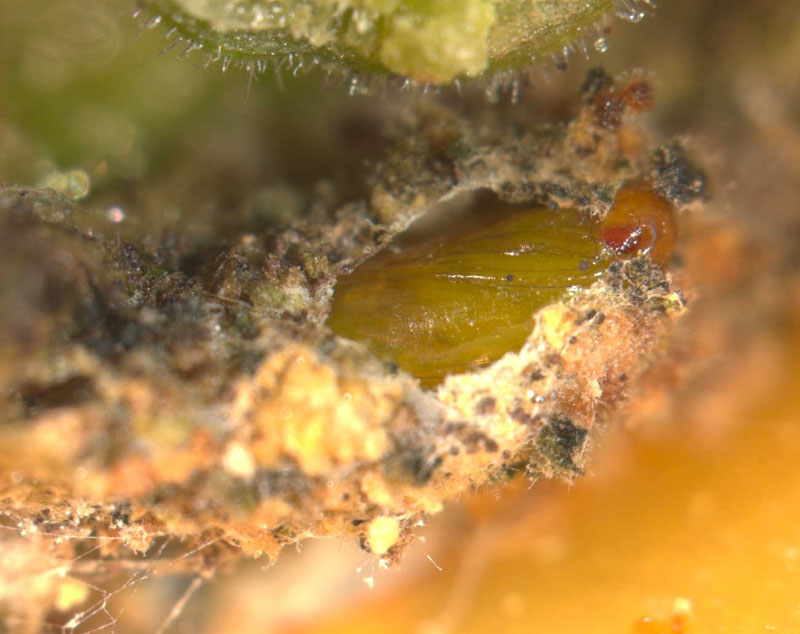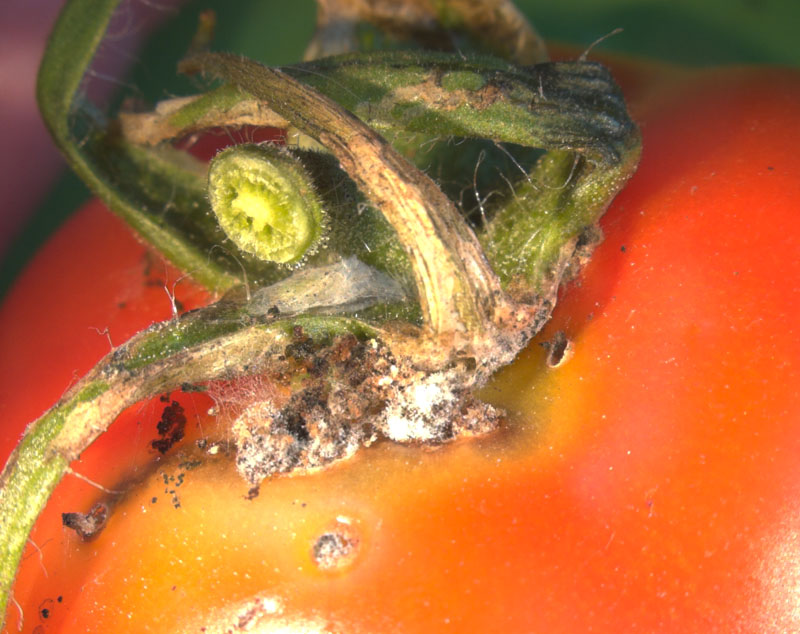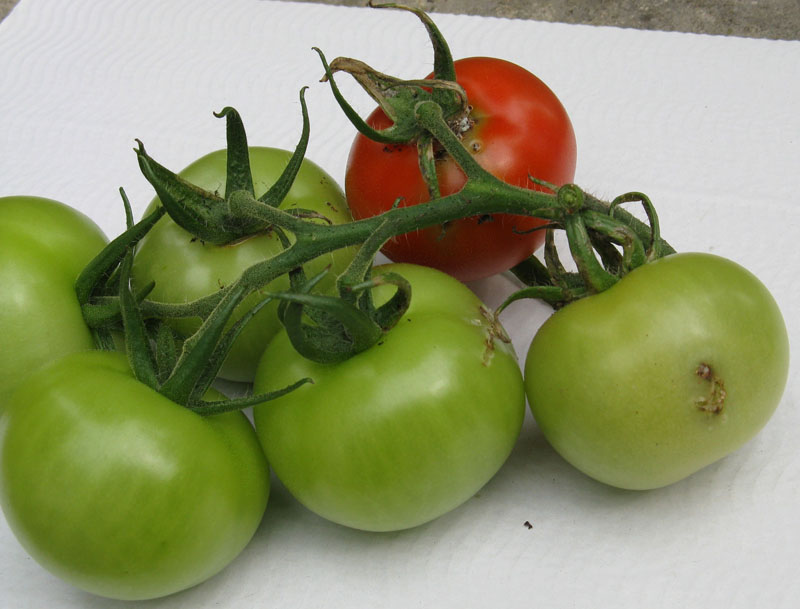Tuta absoluta
|
Tuta absoluta male habitus. Scale = 5 mm. |
|
Tuta absoluta female habitus. Scale = 5 mm. |
|
Tuta absoluta head, focus on labial palps. |
|
Tuta absoluta head. |
|
Tuta absoluta male genitalia. |
|
Tuta absoluta female genitalia. |
|
Larva of Tuta absoluta. (Spain; Hasbrouck Insect Collection). |
|
Head and prothoracic shield of Tuta absoluta. (Spain; Hasbrouck Insect Collection). |
|
Skin texture of larva. The microspinule on each microgranule is as long as the microgranule is high. |
|
Skin texture of larva of Tuta absoluta. The microspinule on each microgranule is as long as the microgranule is high. |
|
Larva of Tuta absoluta in a tomato fruit. Photo © Marja J. van der Straten, NPPO (The Netherlands). |
|
Pupa of Tuta absoluta in a tomato fruit. Photo © Marja J. van der Straten, NPPO (The Netherlands). |
|
Pupa of Tuta absoluta in a tomato fruit. Photo © Marja J. van der Straten, NPPO (The Netherlands). |
|
Damage of Tuta absoluta on a tomato fruit. Photo © Marja J. van der Straten, NPPO (The Netherlands). |
|
Damage of Tuta absoluta on a tomato fruit. Photo © Marja J. van der Straten, NPPO (The Netherlands). |
Name
Tuta absoluta (Meyrick, 1917)
Common names: tomato borer, South American tomato moth, tomato leaf miner, South American tomato pinworm (English); polilla del tomate, polilla perforadora, cogollero del tomate, gusano minador del tomate, minador de hojas y tallos de la papa (Spanish); traça-do-tomateiro (Portuguese).
Original combination: Phthorimaea absoluta Meyrick, 1917
Synonyms: none
Alternative combinations:
- Gnorimoschema absoluta
- Scrobipalpula absoluta
- Scrobipalpuloides absoluta
Classification: Gelechiidae: Gelechiinae: Gnorimoschemini
Adult recognition
Adults are about 4.2–5.0 mm in forewing length. They are gray, mottled with dark gray and yellowish orange. The labial palpusLabial palpus:
The more prominent, elongate pair of appendages on the head, usually three-segmented (pl. palpi).
-800px.jpg) is upturned. The male genitalia have a broad, horseshoe-shaped gnathosGnathos:
is upturned. The male genitalia have a broad, horseshoe-shaped gnathosGnathos:
A variously shaped bridge-like structure, usually hooked or bowed, crossing the tegumen below the uncus.
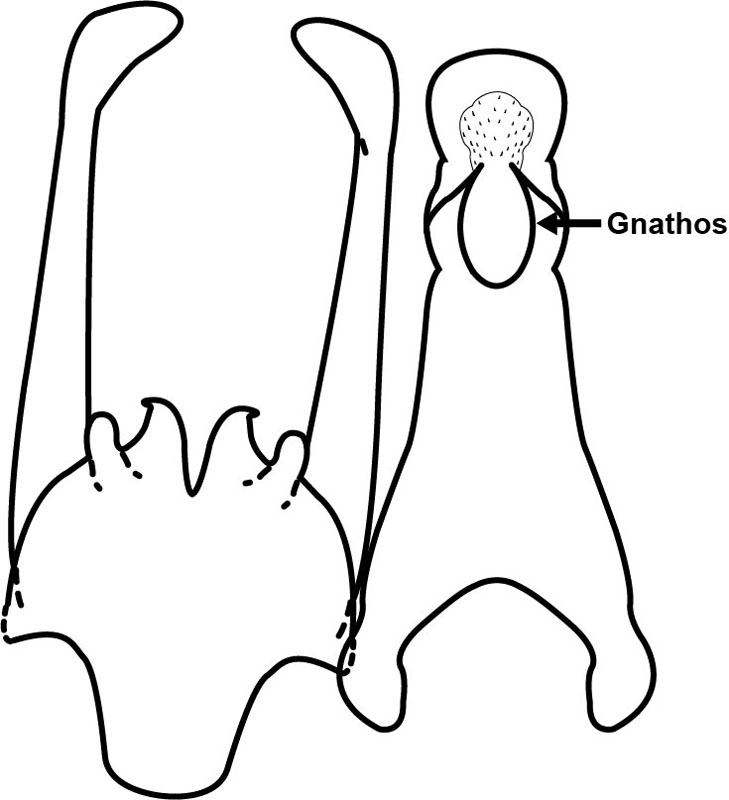 and a digitate valvaValva:
and a digitate valvaValva:
One of the pair of large lateral appendages of the male genitalia (pl. valvae).
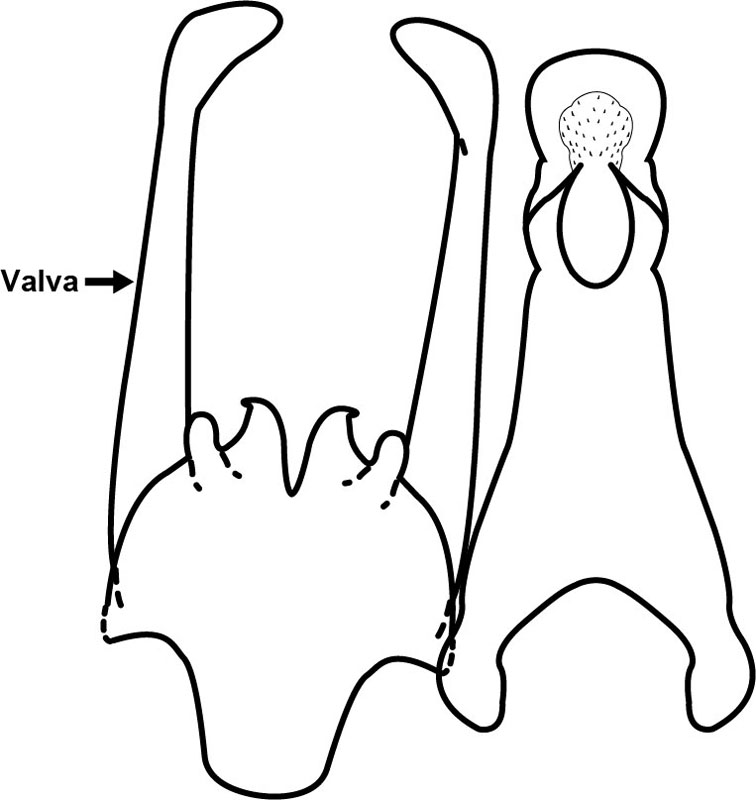 with a medial hump and constriction. The vinculumVinculum:
with a medial hump and constriction. The vinculumVinculum:
The ventral half of the male genitalia, from which the valvae arise.
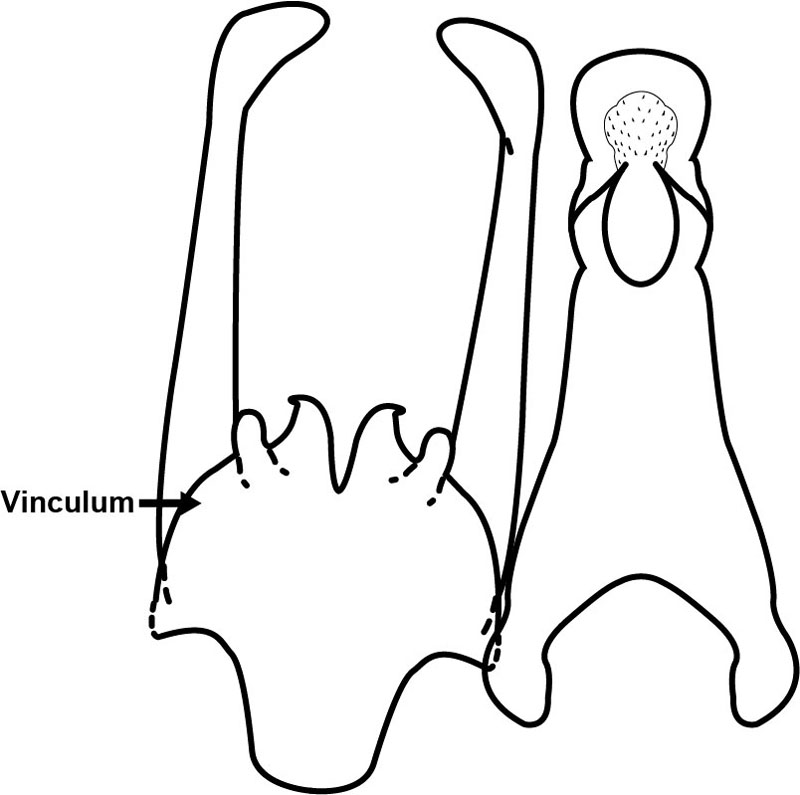 is broad, deeply excavated medially and with paired trapezoid-shaped processes with outwardly curved tips. Females have segment eight with a strongly sclerotized plate with an arched proximal margin, and the inner edge is folded and covered with a foam-like texture. The antrumAntrum:
is broad, deeply excavated medially and with paired trapezoid-shaped processes with outwardly curved tips. Females have segment eight with a strongly sclerotized plate with an arched proximal margin, and the inner edge is folded and covered with a foam-like texture. The antrumAntrum:
Posterior section of the ductus bursae, posterior of the colliculum.
 is long and broadly funnel-shaped, extending beyond the apophysisApophysis:
is long and broadly funnel-shaped, extending beyond the apophysisApophysis:
Rodlike sclerites inside segments 8 and 9 in the female genitalia to which muscles attach (pl. apophyses). Two pairs, called the apophyses anteriores and apophyses posteriores.
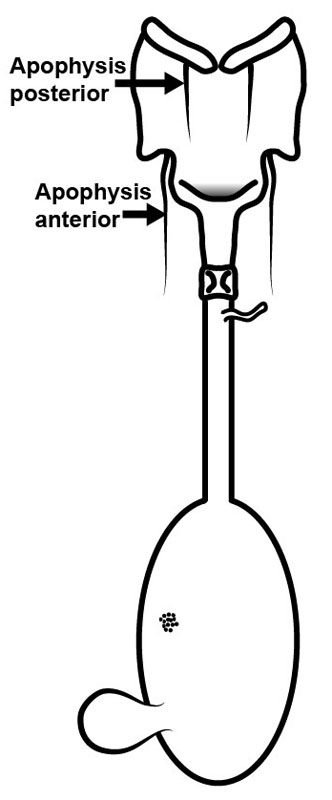 anterioris, and the corpus bursaeCorpus bursae:
anterioris, and the corpus bursaeCorpus bursae:
The enlarged, bulbous anterior end of the female genitalia.
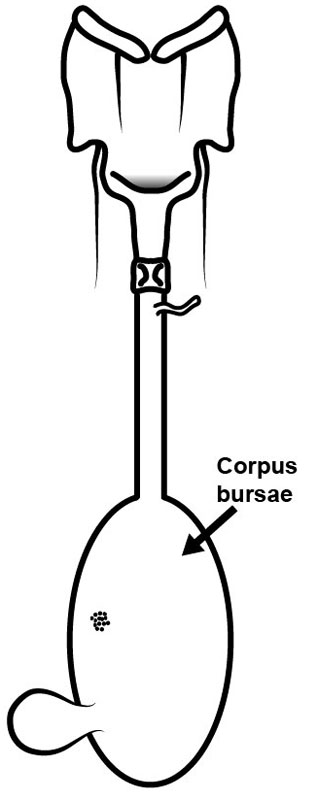 has a small, thorn-like signumSignum:
has a small, thorn-like signumSignum:
Any sclerite, sclerotized area, or discrete granular area on the wall of the corpus bursae (pl. signa).
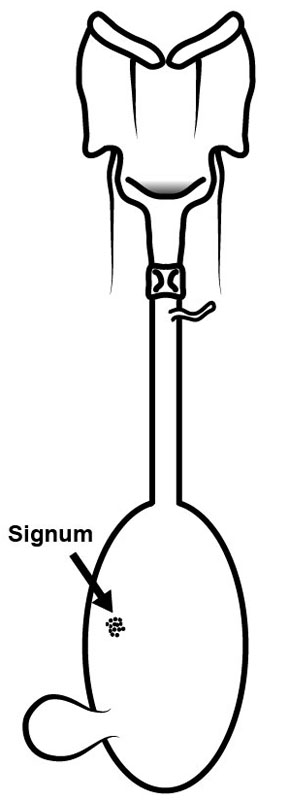 .
.
Immature stages
Larvae when fully grown are about 7.5 mm, cream in color with a dark head, becoming greenish to light pink in the second to fourth instars. The prothoracic shieldProthoracic shield:
Also called the T1 shield. In the larva, the extensive sclerotized area of the dorsal half of the prothorax. It bears six setae on each side, and its color pattern is often diagnostic.
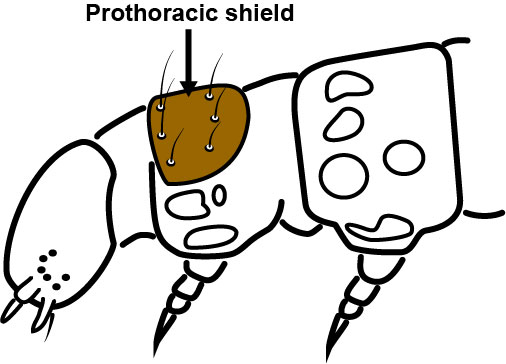 is pale, with dark shading along posterior margin (young specimens often lack posterior shading). The prespiracular pinaculumPinaculum:
is pale, with dark shading along posterior margin (young specimens often lack posterior shading). The prespiracular pinaculumPinaculum:
In the larva, a raised, blister-like area that is often but not necessarily pigmented. They normally surround a seta, or if more than one seta, they are considered to be fused. Some taxa, especially internally boring larvae, may have extra pinacula without setae.
is usually absent or poorly developed so that all three L setae are separate.
PDF - Dichotomous key to Gelechiid larvae
Similar species
This species is superficially similar to Keiferia lycopersicella and several Scrobipalpa species, especially S. atriplicella (Fischer von Röslerstamm). It can be distinguished by the absence of hair-pencils on the male hindwing, which are present in K. lycopersicella, and by the slender forewing, which is larger and broader in S. atriplicella. Tuta absoluta can be differentiated most reliably by the male genital characters: the valvaValva:
One of the pair of large lateral appendages of the male genitalia (pl. valvae).
 is digitate and the gnathosGnathos:
is digitate and the gnathosGnathos:
A variously shaped bridge-like structure, usually hooked or bowed, crossing the tegumen below the uncus.
 is ovate.
is ovate.
Tuta absoluta and Keiferia lycopersicella are the only species in this Tool that have a dark band on the posterior margin of the prothoracic shieldProthoracic shield:
Also called the T1 shield. In the larva, the extensive sclerotized area of the dorsal half of the prothorax. It bears six setae on each side, and its color pattern is often diagnostic.
 . Tuta absoluta has a wide distribution and host range. It is easily confused with the North American species K. lycopersicella, also a tomato pest. The two are very similar but may be separated by the cuticular texture of the dorsumDorsum:
. Tuta absoluta has a wide distribution and host range. It is easily confused with the North American species K. lycopersicella, also a tomato pest. The two are very similar but may be separated by the cuticular texture of the dorsumDorsum:
The posterior margin of a wing, also called the dorsal margin. So called because the edge faces dorsally when the wings are folded against the body.
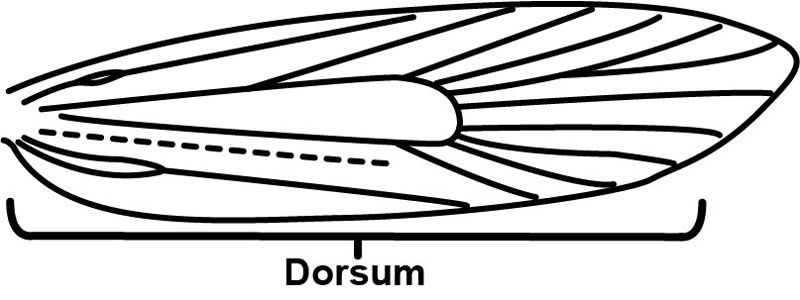 of the posterior abdominal segments. Keiferia lycopersicella has round to pointed microgranules each bearing a short microspine or none. This same region in Tuta absoluta has granules with long microspines. Comparative material of both species is helpful to see this difference. Living larvae may show color differences lost in preserved specimens. Early instars of either species will be difficult to recognize with morphology.
of the posterior abdominal segments. Keiferia lycopersicella has round to pointed microgranules each bearing a short microspine or none. This same region in Tuta absoluta has granules with long microspines. Comparative material of both species is helpful to see this difference. Living larvae may show color differences lost in preserved specimens. Early instars of either species will be difficult to recognize with morphology.
Behavior
Eggs are mainly laid on the underside of leaves. After hatching, larvae penetrate and make irregular mines in leaves, aerial fruits or stems on which they feed and develop. Larvae feed on all part of the host-plants, and feeding habits vary from leaf-mining to boring into buds, stalks and fruits. Larvae do not enter diapause as long as a food source is available. When larvae are fully fed, they usually drop to the ground on silk thread and pupate in the soil, although pupation may also occur on leaves.
Distribution
Native to South America. Currently broadly distributed in South America, Central America and the Caribbean, Europe, Northern Africa, and Asia.
Hosts
Datura ferox L. (Fierce thorn apple)
Datura stramonium L. (Jimsonweed)
Lycium chilense Bertero
Lycopersicon hirsutum Donal.
Nicotiana glauca Graham (Tree tobacco)
Solanum elaeagnifolium Cav. (Silverleaf nightshade)
Solanum habrochaites S. Knapp & D.M. Spooner (Wild tomato)
Solanum lycopersicum L. (Garden tomato)
Solanum lyratum Thunb.
Solanum melongena L. (Eggplant)
Solanum muricatum Ait. (Pepino dulce)
Solanum nigrum L. (Black nightshade)
Solanum viride G. Forst ex Spreng. (Green nightshade)
Comments
Since this species was first described from South America, it has been spreading rapidly as a serious pest of tomato crops in Europe, North Africa, and South America. Damage caused by this species can reach up to 100%. This damage occurs throughout the entire growing cycle of tomatoes. In tomato, apical buds, leaves, stems, flowers and fruits are attacked; however, in potato, aerial parts and tuber are attacked.
This exotic pest is of quarantine significance and any suspects should be forwarded to specialists, including any of the authors of this guide.
Literature
Barrientos et al. 1998Barrientos et al. 1998:
Barrientos ZR, Apablaza HJ, Norero SA, and Estay PP. 1998. Threshold temperature and thermal constant for development of the South American tomato moth, Tuta absoluta (Lepidoptera, Gelechiidae). Ciencia e Investigacion Agraria 25: 133-137.
Clarke 1962Clarke 1962:
Clarke JF. 1962. New species of Microlepidoptera from Japan. Entomological News 73: 102.
Clarke 1965Clarke 1965:
Clarke JF. 1965. Microlepidoptera of Juan Fernandez Islands. Proceedings of the United States National Museum 117: 1-106.
Desneux et al. 2010Desneux et al. 2010:
Desneux N, Wajnberg E, Wyckhuys KAG, Burgio G, Arpaia S, Narvaacute;ez-Vasquez CA, Gonzaacute;lez-Cabrera J, Catalaacute;n Ruescas D, Tabone E, Frandon J, Pizzol J, Poncet C, Cabello T, and Urbaneja A. 2010. Biological invasion of European crops by Tuta absoluta : Ecology, geographic expansion and prospects for biological control. Journal of Pest Science 83: 197-215.
EPPO 2005bEPPO 2005b:
EPPO. 2005b. Tuta absoluta : Data sheets on quarantine pests. EPPO Bulletin (European and Mediterranean Plant Protection Organization) 35: 434-435.
EPPO 2008EPPO 2008:
EPPO. 2008. First record of Tuta absoluta in Morocco. EPPO Reporting Service 9 (174): 2.
Photo credits
Fig. 7: © Marja J. van der Straten, NPPO (The Netherlands).

